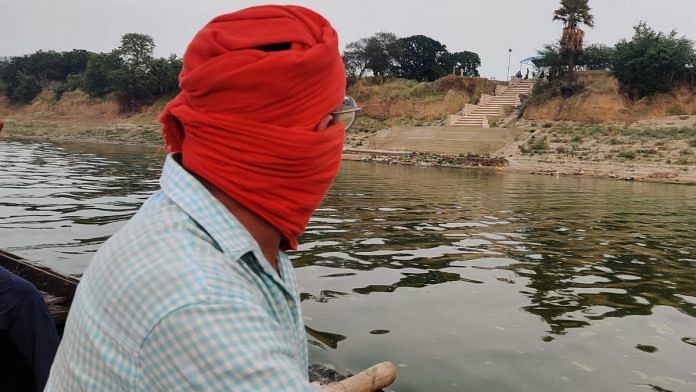Gahmar, Ghazipur: Five dogs are lying asleep next to three withered corpses on the bank of the river Ganga. At the thrum of our approaching motorboat, one dog pops its head up to look, and then promptly goes back to sleep.
Amit Sah, who is accompanying ThePrint on the eight-kilometre boat ride from Gahmar village in Ghazipur district of Uttar Pradesh to the border with Chausa in Buxar district of Bihar, remarks that the dogs are probably too full from eating human remains over the last five days, because dozens of bodies that have been fished out of the holiest river in Hindu tradition are now at the mercy of scavenging fauna.
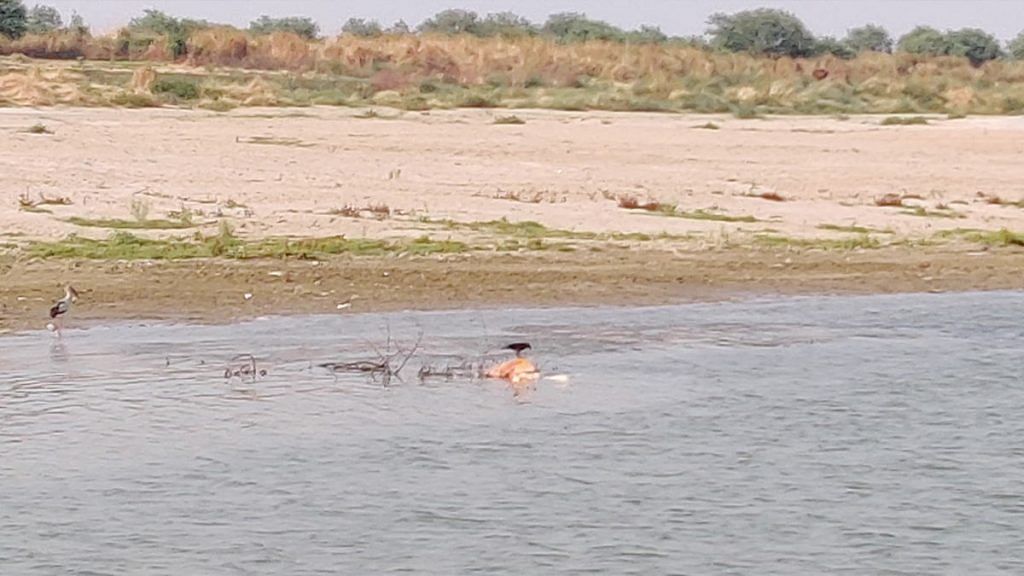
On Thursday’s four-hour long journey, ThePrint spots, at rough count, more than 100 corpses and skeletal remains, though the number cannot be accurately verified. Earlier this week, 71 bodies had washed ashore at Mahadev Ghat in Chausa, suspected to be mostly of Covid-19 patients, and more are floating down the river now.
As if to prove Amit’s point, metres away from the dogs, some crows and an eagle fight over bones from a body stuck in a bush beside the river.
“Who will take responsibility for this? There are bodies floating all over… What happens to Namami Gange project?” asks Amit, a resident of Gahmar who, along with his friends, has been helping the poor with food and other needs.
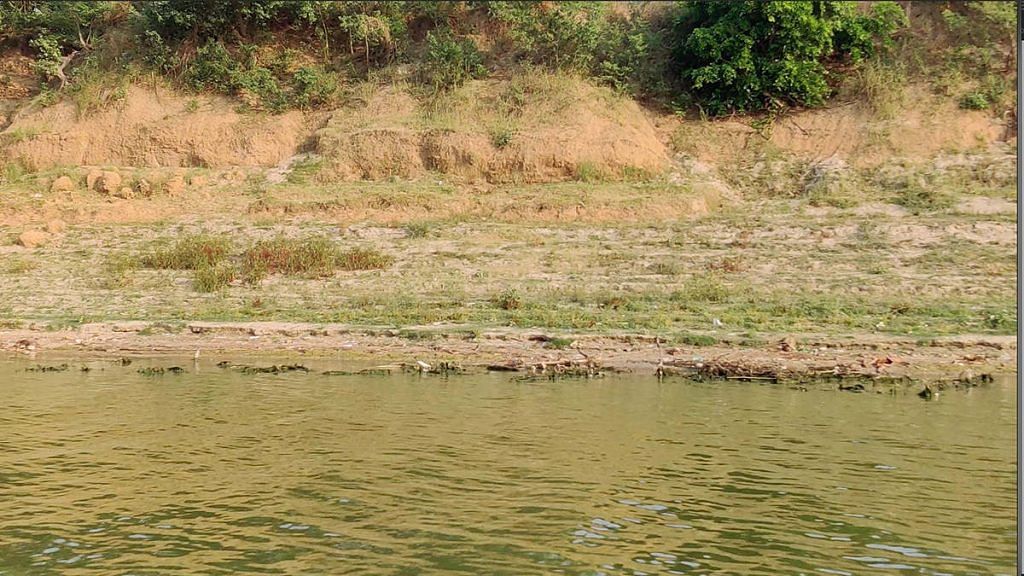
“There is a blame game going on between UP and Bihar about where these corpses came from. Can they float upstream? Will anyone claim these bodies?” he asks.
Gahmar, which some reports call Asia’s largest village, has seen 15-19 deaths on some days, while the capacity of the crematorium at Narayan Ghat is three at a time. Plus there are bodies coming from other villages, at times more than 70 in a day, Amit claims, “so all the remaining bodies from Gahmar and other villages end up in the Ganga”.
Minutes later, a state administration patrol in a civilian boat comes down the river, making announcements on a loudspeaker. “People are requested not to immerse dead bodies in the Ganga ji. Administration has made all arrangements for cremations. We request all the boat owners not transport any dead body for immersion in Ganga ji. Anyone found not abiding by these orders will be dealt with strictly according to the law.”
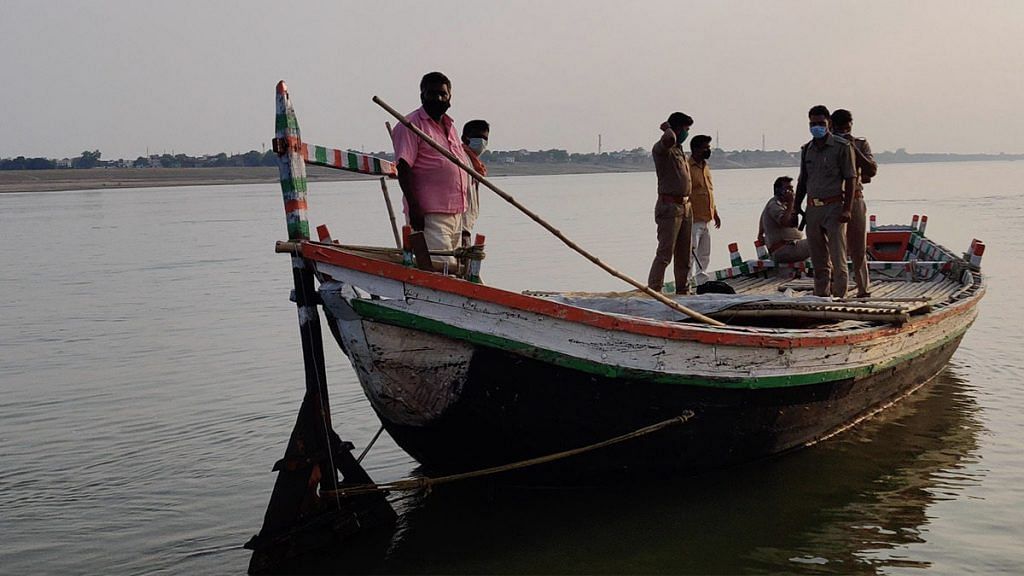
Hearing these announcements, a small crowd gathers on a road parallel to the river.
The Ghazipur district authorities have already started giving monetary help to the poor so that they can cremate their loved ones instead of pushing them into the river. Police presence has been beefed up on ghat steps from Gahmar to the Karamnasa river, a tributary of the Ganga that runs along the Ghazipur-Buxar border, to prevent immersion of corpses.
Also read: Officials clueless, villagers blame ‘outsiders’ as Unnao finds over 100 bodies buried by Ganga
‘How can a minor fever take my husband’s life?’
In Chakwa Mohalla of Gahmar village, 38-year-old Urmila Devi is mourning her 42-year-old husband Shambhu Nath Bhind.
“I still don’t understand how a minor fever can take the life of my husband,” she says, quivering while folding some of his clothes into a trunk.
Shambhu Nath worked as a mason in the village, but on 19 April, he developed a fever. “He took some paracetamol tablets and continued with his work, but on the night of 22 April, he started gasping for air. It looked like he was choking,” Shambhu Nath’s brother Shyam Narayan Bhind says. Shambhu died on his way to hospital, which is just three kilometres away from their house.
The next day, another brother, 35-year-old Swami Nath, developed a fever in the morning and died at home.
Shyam Narayan says while more than 70 people came to attend Shambhu’s last rites, just 10 came for Swami Nath’s, out of fear.
“Our relatives had helped us to arrange Shambhu’s cremation, but when it came to Swami, we were helpless and alone,” Shyam Narayan says.
The family loaded Swami’s body into a tractor trolley, took it Narayan Ghat, and immersed it in the Ganga.
After videos of bodies floating or washing ashore on the ghats of the Ganga started surfacing on social media, the entire 20-member Bhind family started sleeping together in the courtyard.
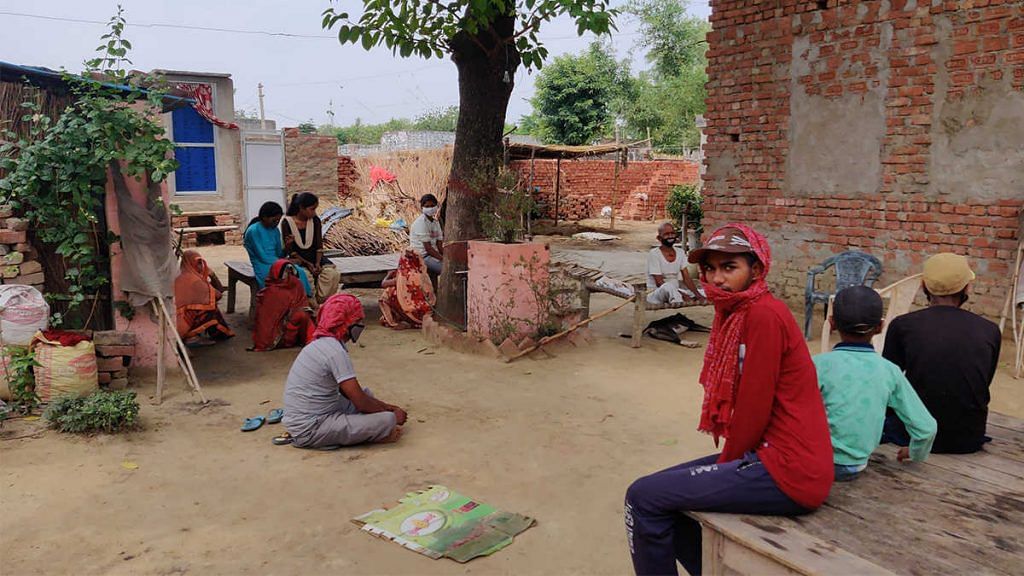
The youngest Bhind brother, Narsingh Kumar, explains: “We tried hard to make sure our kids don’t see these visuals, but they have, and are now terrified. During the day, we force them to watch cartoons so they can shake off this trauma. During the nights, we spread a tarpaulin and then mattresses in the courtyard, and try to stay as close as possible.”
But Swami Nath’s widow Kavita Devi adds: “When I see these videos of bodies piled up along the Ganga’s shores, I feel he is dying again and again.”
Also read: ‘1, 2, 3, 4, 5…’ — UP fishermen count floating dead as poverty, rituals drive up river burials
Can’t afford wood for pyres
Across the road lives another family who immersed 65-year-old Bimla Devi’s body in the Ganga.
Rakesh Singh, Bimla’s brother-in-law, explains why. “There are multiple reasons. One, the wood prices have shot through the roof. We couldn’t afford her cremation. Second, we needed to prevent our family members from mourning over the dead body, which could have increased the infection among other family members. So, in these conditions, we took her body to the ghat and immersed it with all the rites,” he says.
Rakesh claims around 70 per cent of bodies in the area have been pushed into the river in the last four weeks, mostly due to economic hardships and the rush at the cremation grounds.
Brijesh Bhind, a Bahujan Samaj Party worker, has a different count — he says 4 out of 7 dead bodies from Chakwa Mohalla alone were immersed in the last three weeks.
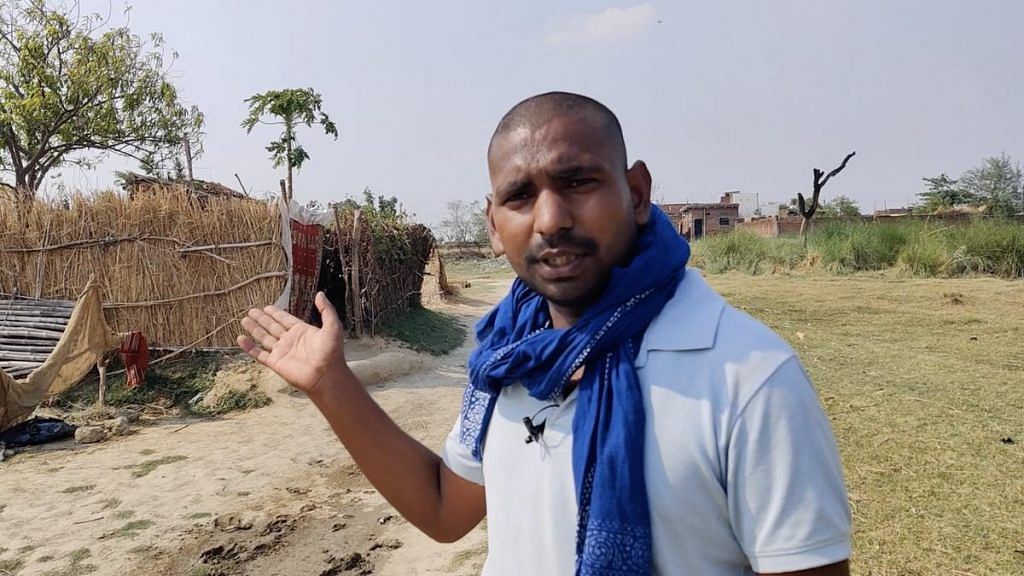
“Most of the families here work as daily wagers. They don’t have any savings. So, in a situation like this, be it during Covid-19 or even before, they have been immersing their loved ones in the Ganga,” Brijesh says.
He takes ThePrint to meet another family, headed by Phoolwasi Devi. Her daughter-in-law Manju suffered a miscarriage in January and was advised to undergo surgery. She was admitted to a hospital in Varanasi and doctors had kept her on medication before the surgery. But on 20 April, she developed fever and cough, and died on the 23rd, Phoolwasi says.
Brijesh says the family doesn’t have an idea about the bodies floating on the Ganga as their house doesn’t even have an electricity connection.
Also read: How earthen pots on peepal trees tell the real Covid death toll in UP’s Banda
‘We have lost count’
Graves are still being dug along the Ganga to dispose of the remains that can be reached from the ghats, while the ones farther away are being fished out with the help of the ‘Dom’ caste which handles cremations.
Karan and Dabloo, members of the community burying one body after another with the district administration and UP Police personnel, say in exhausted voices that the situation Thursday is actually better than it was three days ago
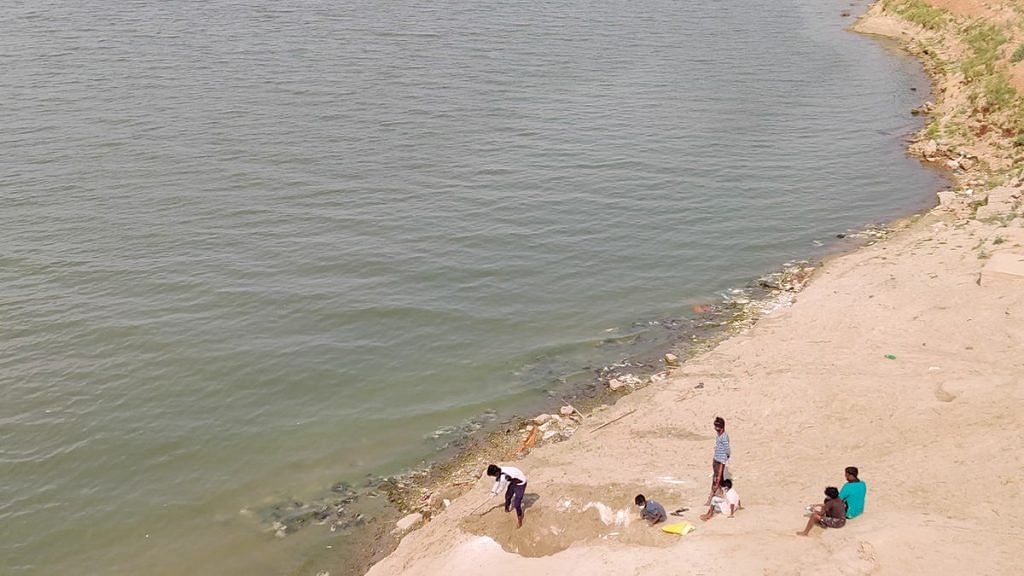
“Had you come here 3 days ago, it would have been impossible of you to even peek downwards from this river cliff. There were dead bodies all along the shore, and it took the administration lot of effort to contain this situation,” Karan says.
Dabloo, dragging a steel spade to dig more graves, adds: “We have lost count of how many bodies we have seen and buried since 11 May.”
(Edited by Shreyas Sharma)
Also read: ‘Where are our netas?’ Anger in UP over missing politicians as state buckles under Covid


